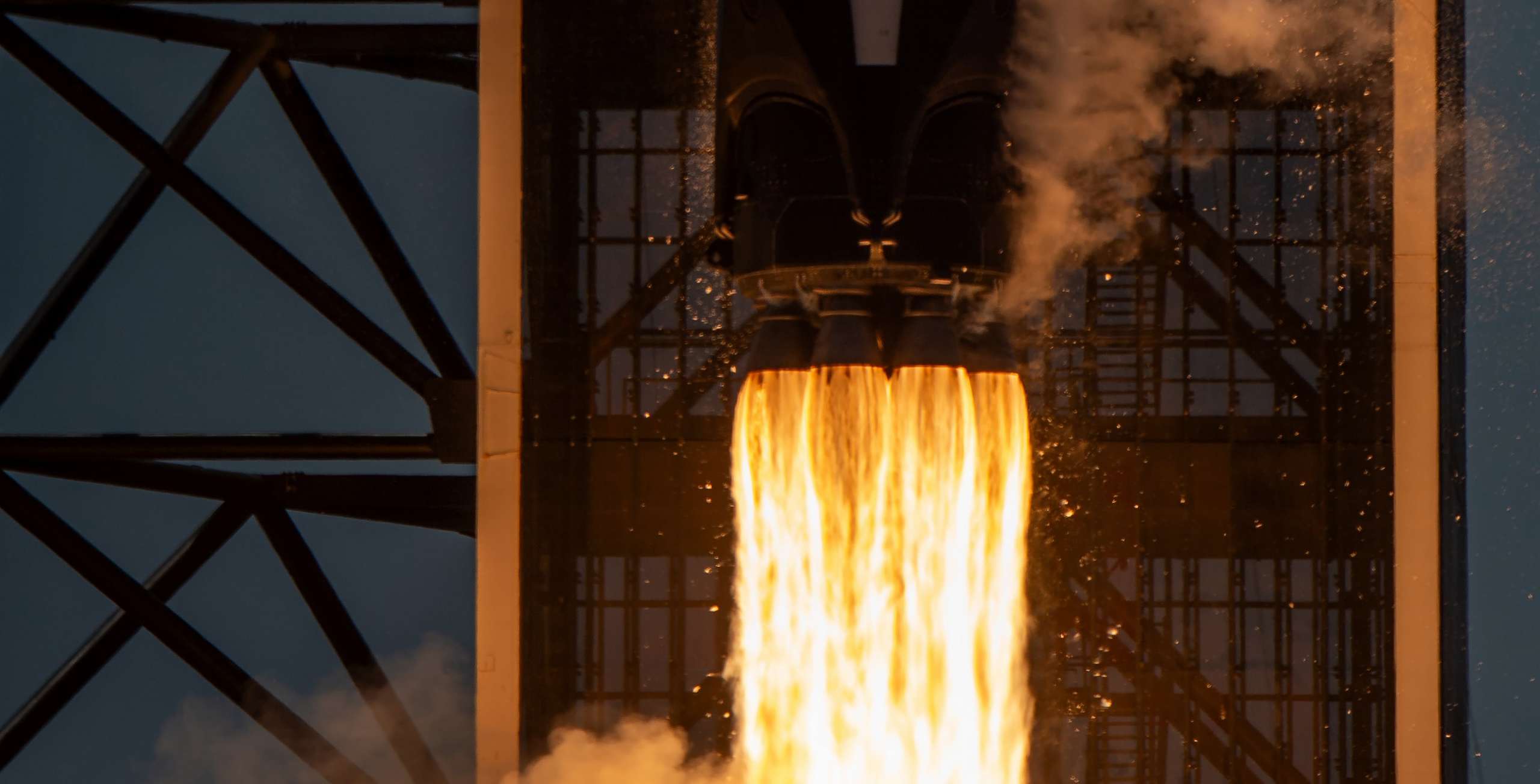
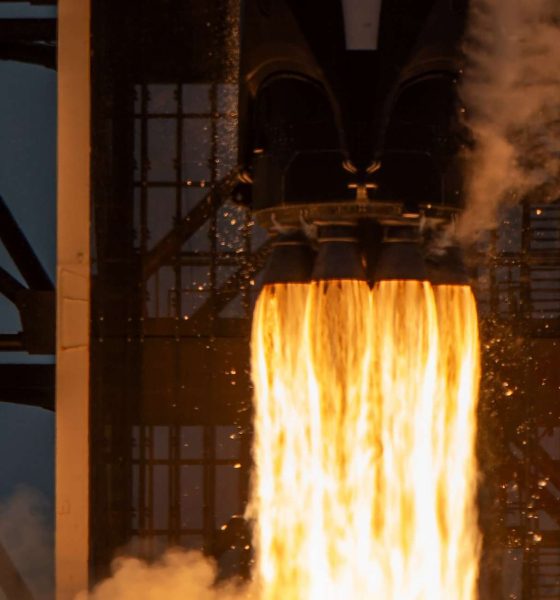
News
SpaceX to ring in Crew Dragon’s success with a Starlink launch and landing
SpaceX wants to ring in the historic success of its Crew Dragon spacecraft the only way it knows how – sending 60-satellite Starlink satellites into orbit and landing another Falcon booster as few as three days after the company’s inaugural astronaut launch.
The mission – deemed Starlink-8 – will be SpaceX’s eighth Starlink launch overall and the seventh launch of upgraded v1.0 satellites, pushing the company a mission past the halfway point towards its first internet beta test. If successful, it will raise SpaceX’s ever-growing constellation to some ~475 satellites strong, approximately 400 spacecraft shy of the ~840 COO and President Gwynne Shotwell believes are necessary to begin rolling out Starlink internet service.
Delayed from May 7th to the 17th, 18th, and 19th before SpaceX called the mission off to give Crew Dragon’s inaugural astronaut launch space to breathe, Starlink-8 is now scheduled to launch no earlier than 9:25 pm EDT on June 3rd (02:25 UTC, 4 June). Aside from taking SpaceX another step towards an operational Starlink constellation and source of income independent of launches, the launch is also on track to mark several more critical milestones both in orbit and back on (or near) the ground.
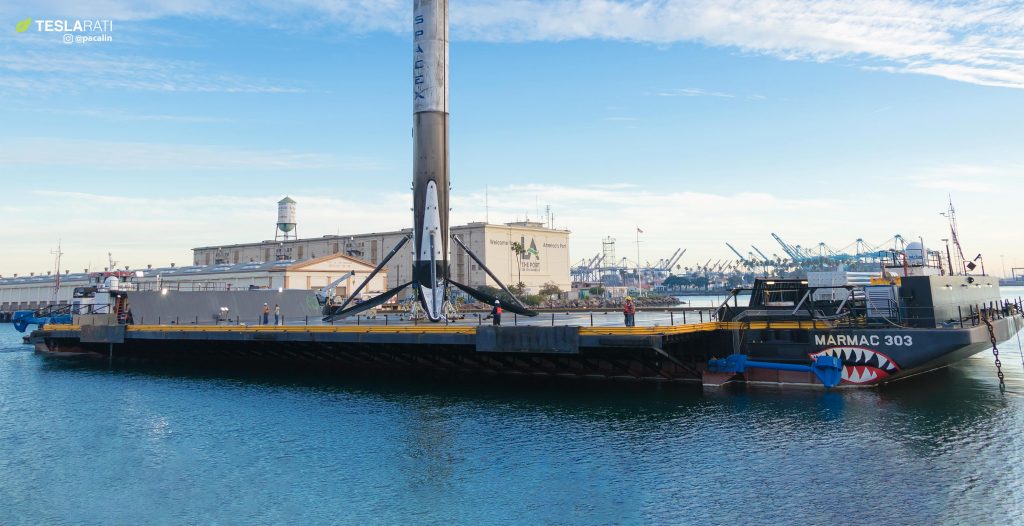
By far the most notable (and unexpected) first of Starlink-8 is related to booster recovery plans. On May 30th, the very same day SpaceX performed its first astronaut launch, drone ship Just Read The Instructions (JRTI) was spotted heading out into the Atlantic Ocean, deck cleared for the first time in the better part of a year. While initially assumed to be another one of a few sea trials the radically upgraded drone ship has performed in the last few weeks, news broke hours later that JRTI was actually heading out to sea for its first rocket recovery attempt in more than 16 months.
Replacing SpaceX’s original East Coast-based drone ship of the same name, the current iteration of Just Read The Instructions debuted in the Pacific Ocean in January 2016 with an explosively-unsuccessful booster landing after launching the Jason-3 weather satellite. The ship’s next landing attempt would come one year later and kick of seven consecutive booster landings completed over the following 24 months, followed shortly by a temporary pause of SpaceX’s West Coast launch presence.
SpaceX intends to perform its limited manifest of future Californian launches while relying entirely on return-to-launch-site (RTLS) rocket booster recoveries back onshore, freeing up drone ship JRTI to head to Florida to support the company’s far busier East Coast manifest. After transiting the Panama Canal in August 2019 and undergoing several months of refits in Louisiana, JRTI arrived in Florida in December 2019 and has been gradually upgraded at Port Canaveral over the last few months. Now, outfitted with a new Octagrabber robot and thrusters and power supplies that dwarf those on SpaceX’s other drone ship, SpaceX has apparently given JRTI the go-ahead to attempt its first booster recovery in almost a year and a half.
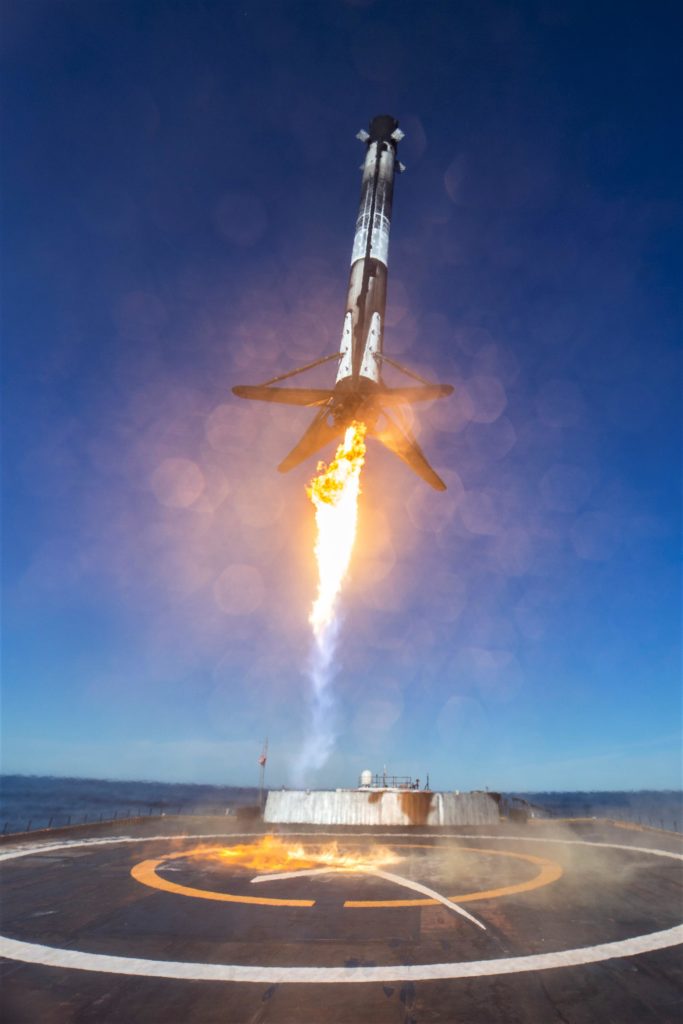
Visors, reuse, rideshares and more
Additionally, Starlink-8 is scheduled to debut SpaceX’s first “VisorSat”, a Starlink satellite modified with a visor specifically designed to prevent sunlight from reflecting off of the shiny satellites and disrupting ground-based astronomy. If successful, all future Starlink satellites SpaceX manufactures will include the modification, hopefully mitigating or wholly eliminating Starlink’s impact on astronomy.
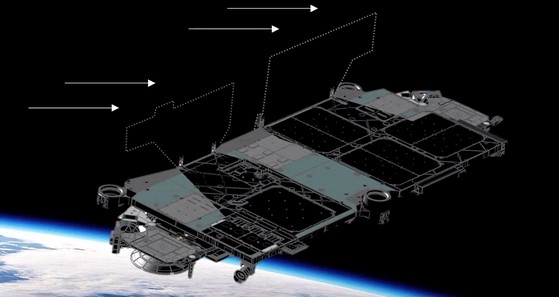
Starlink-8 is also expected to debut SpaceX’s potentially game-changing addition of rideshare slots for small satellites aboard a large portion of the company’s planned Starlink launches. Earth imaging company Planet is the first announced customer, with three ~125 kg (~300 lb) SkySat imaging satellites manifested on Starlink-8. Potentially costing Planet just $1 million apiece, the launch option could easily become industry-leading if SpaceX can regularly include several hundred kilograms of 3rd-party satellites on each of the 20+ Starlink missions it’s likely to launch annually.
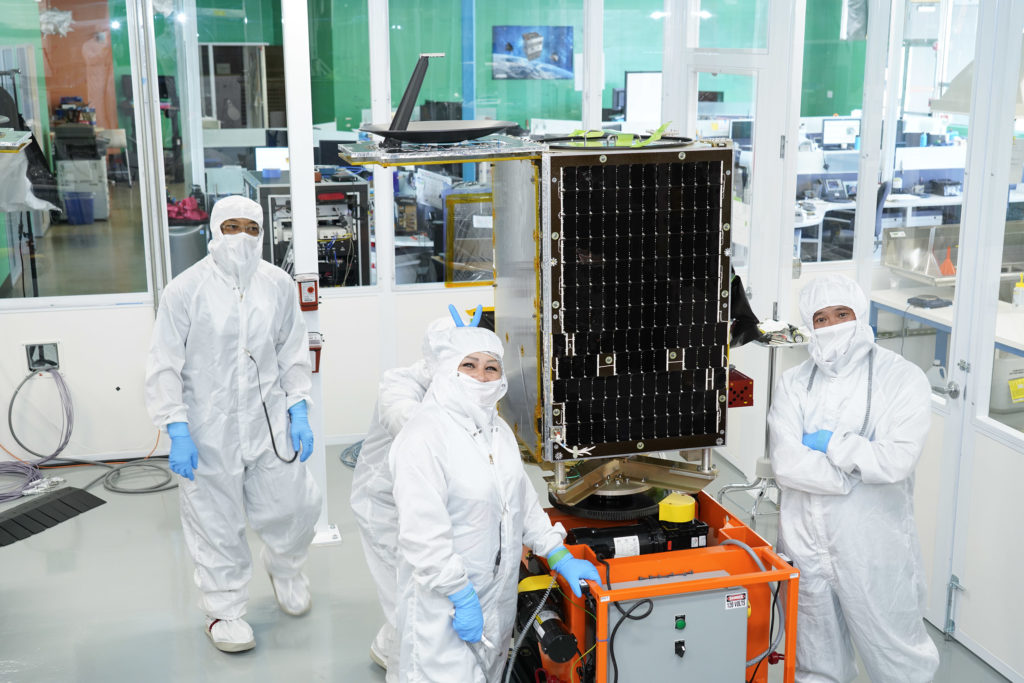
Finally, Next Spaceflight says that Falcon 9 booster B1049 has been assigned to support Starlink-8, meaning that the mission will be the second time ever that a Falcon 9 booster has attempted its fifth orbital-class launch. Starlink-8 will come two and a half months after improper refurbishment caused Falcon 9 booster B1048 to suffer an in-flight engine failure during its fifth launch. While the booster changed its flight program on the fly to ensure the Starlink-6 mission was successfully completed, B1048 did so at the cost of its landing propellant, ending the booster’s productive life with a violent crash somewhere on the surface of the Atlantic Ocean.
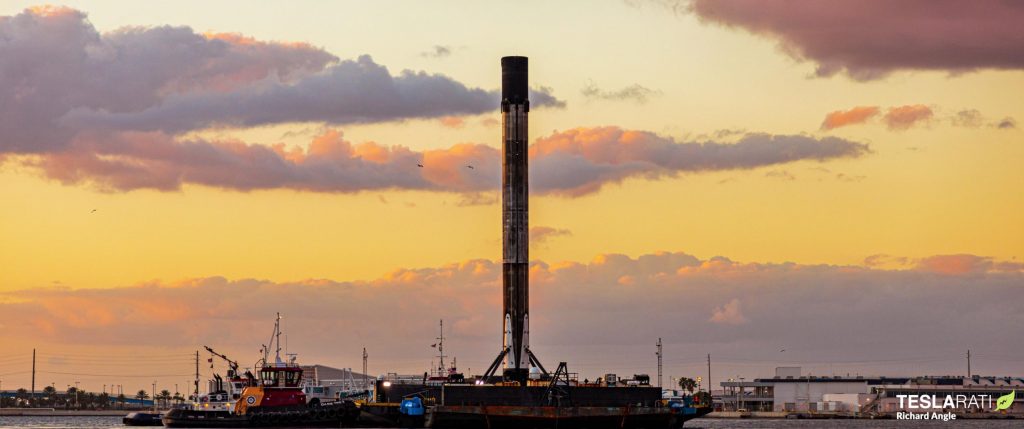
If B1049 can successfully launch and land for the fifth time on June 3rd, it will become the pack leader of SpaceX’s fleet of reusable rockets. With a safe landing, B1049 can prepare to become the first booster to launch six times, hopefully proving that Falcon 9 can safely fly six, seven, eight, or more times – perhaps one day cresting 10 launches to achieve Falcon 9 Block 5’s design goal.
Check out Teslarati’s Marketplace! We offer Tesla accessories, including for the Tesla Cybertruck and Tesla Model 3.

News
Tesla’s new Holiday perk is timed perfectly to make FSD a household name
Tesla AI4 owners get FSD (Supervised) through Christmas, New Year’s Eve and well into the post-holiday travel season.

Tesla quietly rolled out a free Full Self-Driving (Supervised) trial for roughly 1.5 million HW4 owners in North America who never bought the package, and the timing could very well be genius.
As it turns out, the trial doesn’t end after 30 days. Instead, it expires January 8, 2026, meaning owners get FSD (Supervised) through Christmas, New Year’s Eve and well into the post-holiday travel season. This extended window positions the feature for maximum word-of-mouth exposure.
A clever holiday gift
Tesla watcher Sawyer Merritt first spotted the detail after multiple owners shared screenshots showing the trial expiring on January 8. He confirmed with affected users that none had active FSD subscriptions before the rollout. He also observed that Tesla never called the promotion a “30-day trial,” as the in-car message simply reads “You’re Getting FSD (Supervised) For the Holidays,” which technically runs until after the new year.
The roughly 40-day period covers peak family travel and gatherings, giving owners ample opportunity to showcase the latest FSD V14’s capabilities on highway trips, crowded parking lots and neighborhood drives. With relatives riding along, hands-off highway driving and automatic lane changes could become instant conversation starters.
Rave reviews for FSD V14 highlight demo potential
FSD has been receiving positive reviews from users as of late. Following the release of FSD v14.2.1, numerous owners praised the update for its smoothness and reliability. Tesla owner @LactoseLunatic called it a “huge leap forward from version 14.1.4,” praising extreme smoothness, snappy lane changes and assertive yet safe behavior that allows relaxed monitoring.
Another Tesla owner, @DevinOlsenn, drove 600 km without disengagements, noting his wife now defaults to FSD for daily use due to its refined feel. Sawyer Merritt also tested FSD V14.2.1 in snow on unplowed New Hampshire roads, and the system stayed extra cautious without hesitation. Longtime FSD tester Chuck Cook highlighted improved sign recognition in school zones, showing better dynamic awareness. These reports of fewer interventions and a more “sentient” drive could turn family passengers into advocates, fueling subscriptions come January.
Elon Musk
Elon Musk predicts AI and robotics could make work “optional” within 20 years
Speaking on entrepreneur Nikhil Kamath’s podcast, Musk predicted that machines will soon handle most forms of labor, leaving humans to work only if they choose to.
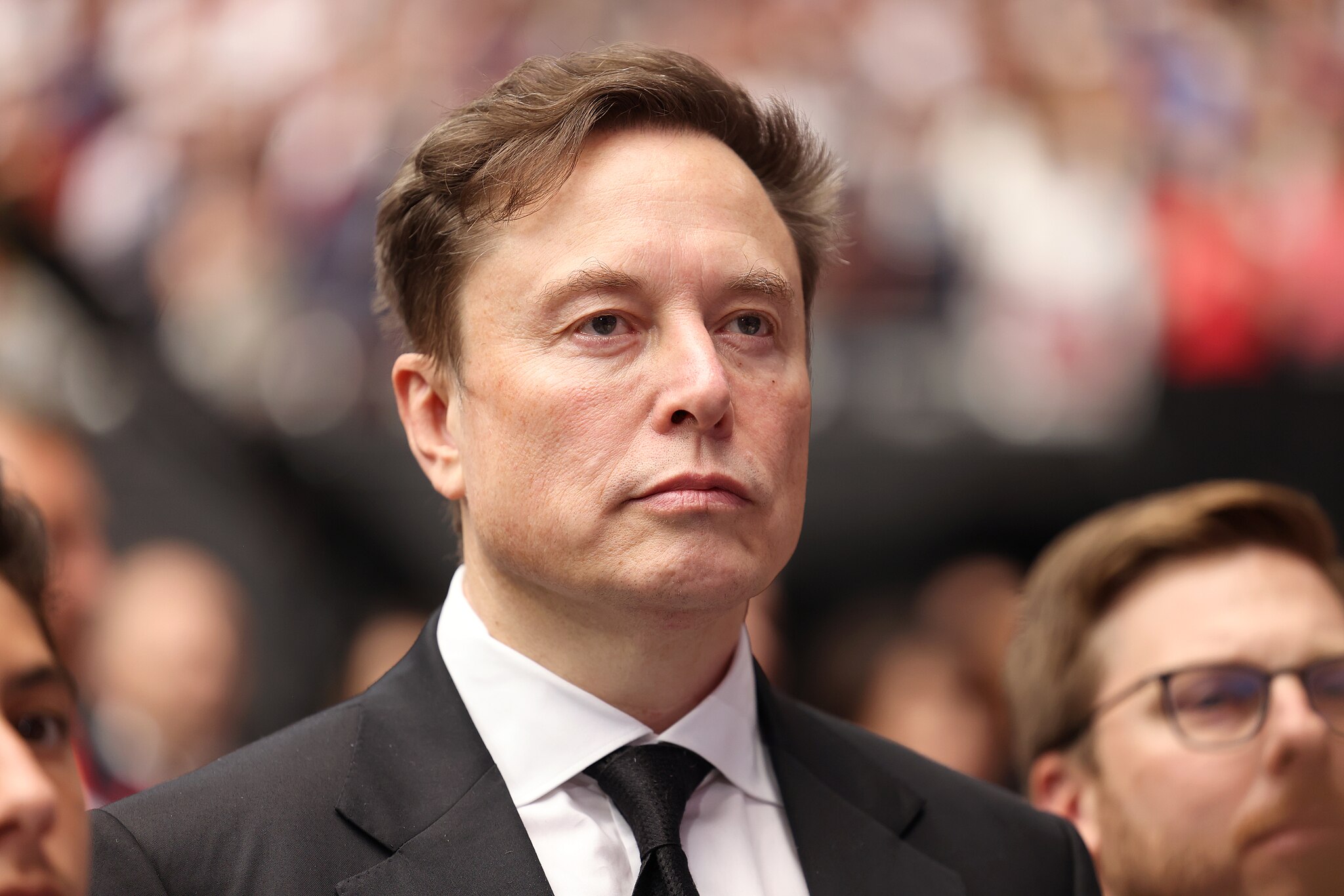
Elon Musk stated that rapid advances in artificial intelligence and robotics could make traditional work unnecessary within two decades.
Speaking on entrepreneur Nikhil Kamath’s podcast, Musk predicted that machines will soon handle most forms of labor, leaving humans to work only if they choose to.
Work as a “hobby”
During the discussion, Musk said the accelerating capability of AI systems and general-purpose robots will eventually cover all essential tasks, making human labor a choice rather than an economic requirement. “In less than 20 years, working will be optional. Working at all will be optional. Like a hobby,” Musk said.
When Kamath asked whether this future is driven by massive productivity growth, Musk agreed, noting that people will still be free to work if they enjoy the routine or the challenge. He compared future employment to home gardening, as it is something people can still do for personal satisfaction even if buying food from a store is far easier.
“Optional” work in the future
Elon Musk acknowledged the boldness of his claim and joked that people might look back in 20 years and say he was wrong. That being said, the CEO noted that such a scenario could even happen sooner than his prediction, at least if one were to consider the pace of the advancements in AI and robotics.
“Obviously people can play this back in 20 years and say, ‘Look, Elon made this ridiculous prediction and it’s not true,’ but I think it will turn out to be true, that in less than 20 years, maybe even as little as ten or 15 years, the advancements in AI and robotics will bring us to the point where working is optional,” Musk said.
Elon Musk’s comments echo his previous sentiments at Tesla’s 2025 Annual Shareholder Meeting, where he noted that Optimus could ultimately eliminate poverty. He also noted that robots like Optimus could eventually provide people worldwide with the best medical care.
Elon Musk
Elon Musk reiterates why Tesla will never make an electric motorcycle
Tesla CEO Elon Musk preemptively shut down speculations about a Tesla road bike once more.
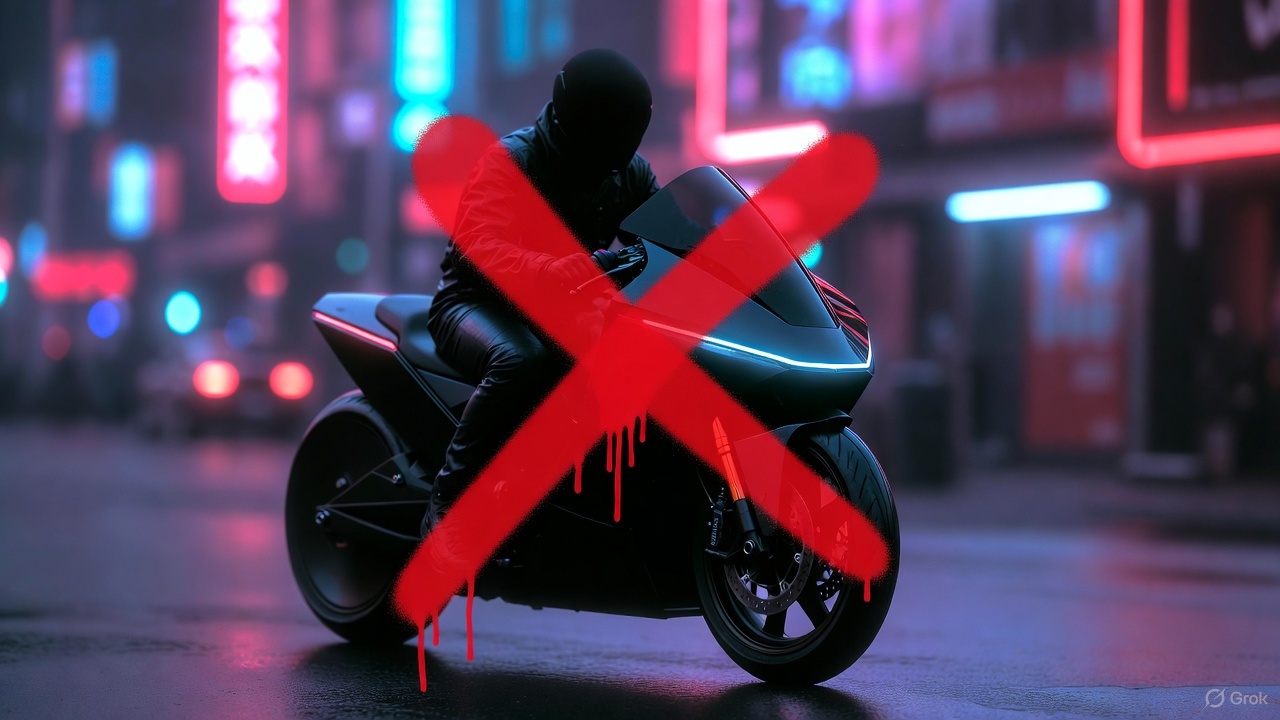
Tesla CEO Elon Musk preemptively shut down speculations about a Tesla road bike once more, highlighting that the electric vehicle maker has no plans to enter the electric motorcycle market.
Musk posted his clarification in a post on X.
Musk’s reply to a fun AI video
X user @Moandbhr posted an AI video featuring the Tesla CEO on the social media platform, captioning it with “Mr. Elon Musk Just Revealed the Game-Changing Tesla Motorcycle.” The short clip depicted Musk approaching a sleek, single-wheeled vehicle, stepping onto it, and gliding off into the distance amid cheers. The fun video received a lot of traction on X, gaining 3.1 million views as of writing.
Musk replied to the post, stating that a Tesla motorcycle is not going to happen. “Never happening, as we can’t make motorcycles safe. For Community Notes, my near death experience was on a road bike. Dirt bikes are safe if you ride carefully, as you can’t be smashed by a truck,” Musk wrote in his reply.
Musk’s Past Comments on Two-Wheelers
Musk also detailed his reservations about motorcycles in a December 2019 X post while responding to questions about Tesla’s potential ATV. At the time, he responded positively to an electric ATV, though he also opposed the idea of a Tesla road-going motorcycle. Musk did state that electric dirt bikes might be cool, since they do not operate in areas where large vehicles like Class 8 trucks are present.
“Electric dirt bikes would be cool too. We won’t do road bikes, as too dangerous. I was hit by a truck & almost died on one when I was 17,” Musk wrote in his post.
Considering Musk’s comments about dirt bikes, however, perhaps Tesla would eventually offer a road bike as a recreational vehicle. Such a two-wheeler would be a good fit for the Cybertruck, as well as future products like the Robovan, which could be converted into an RV.









